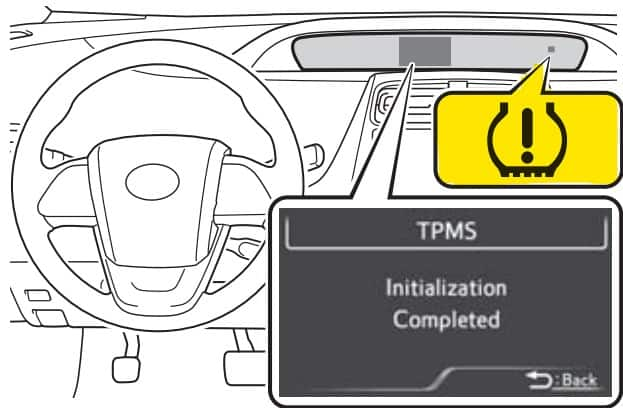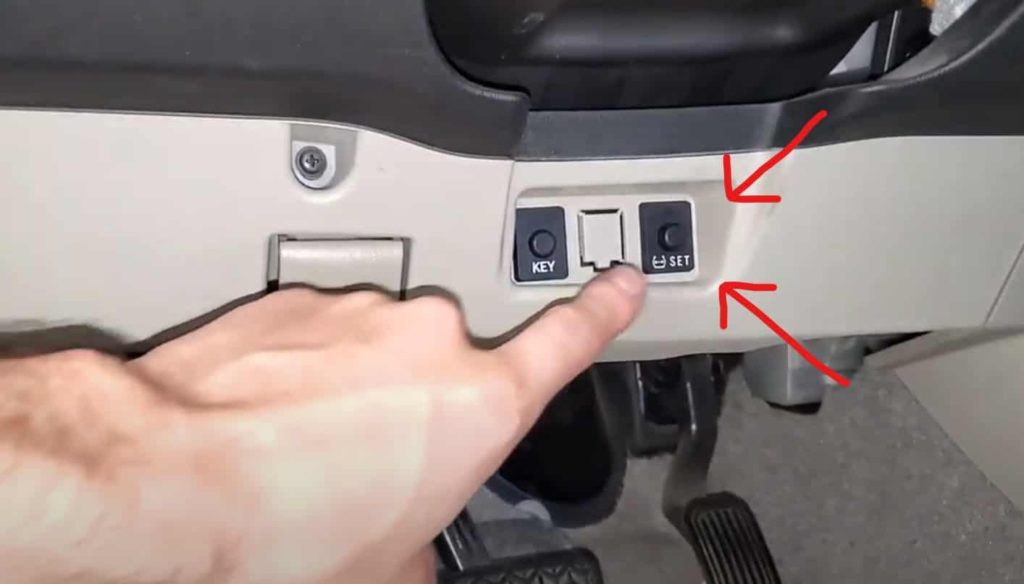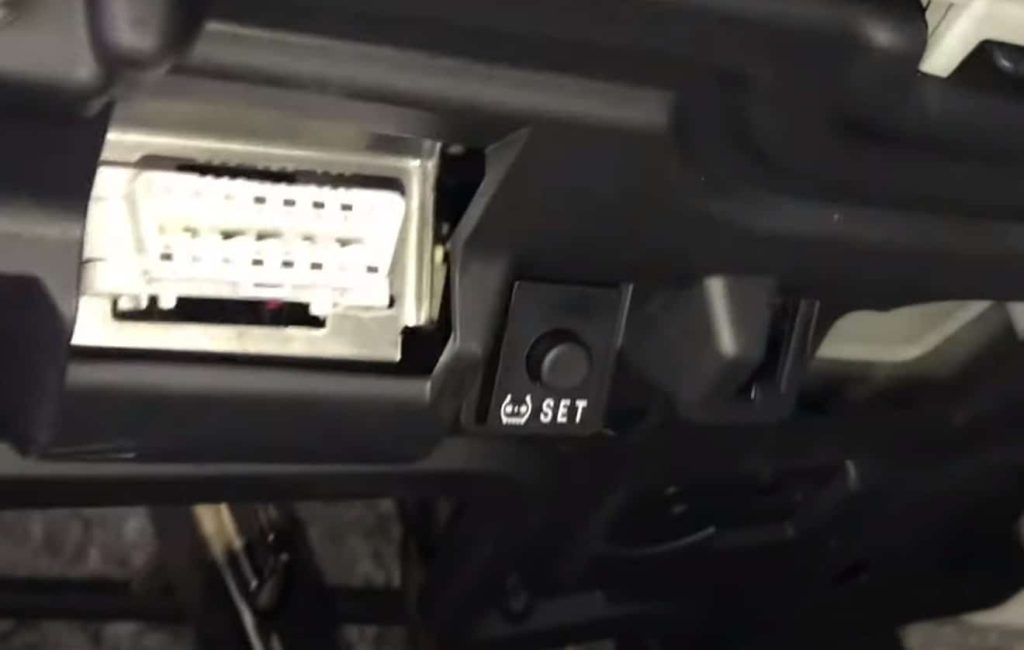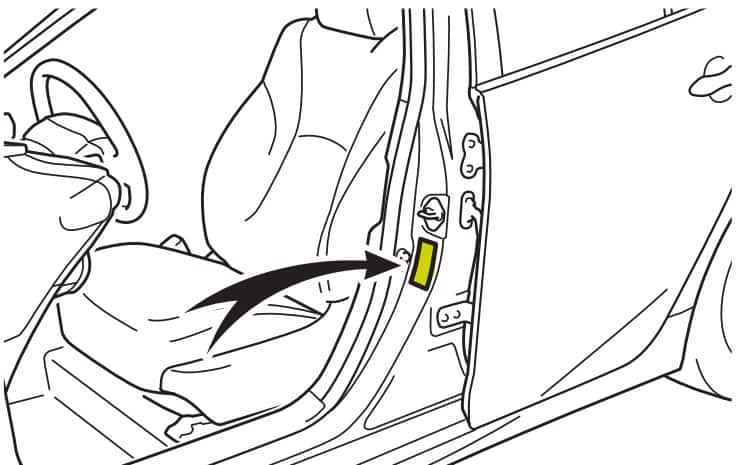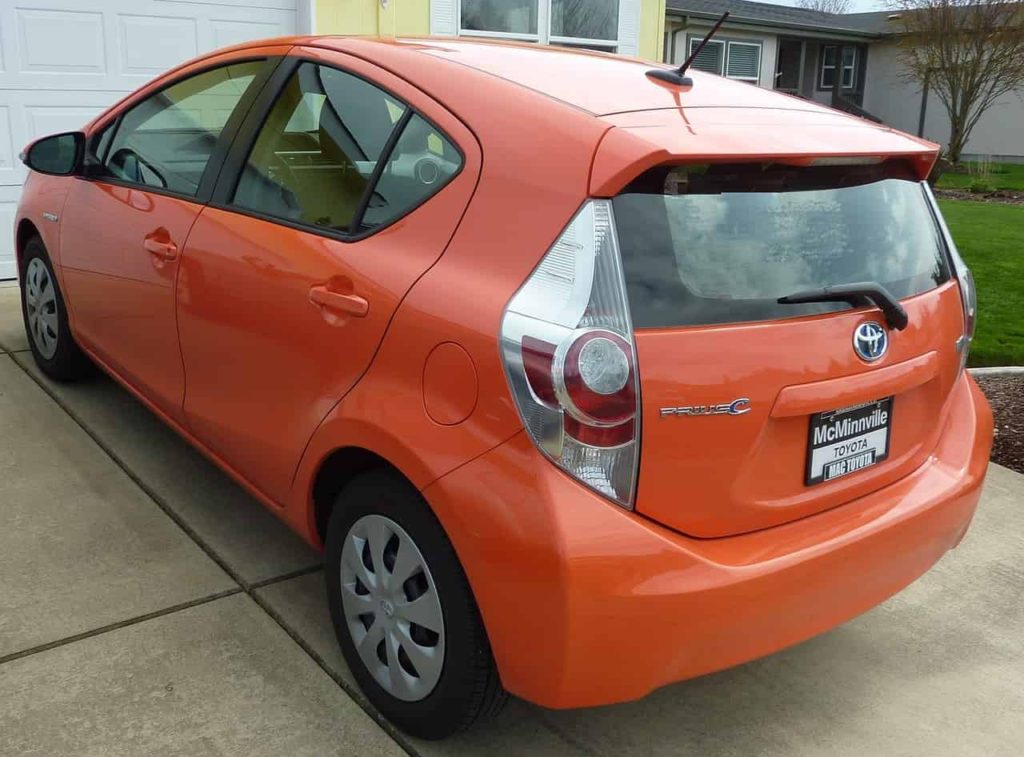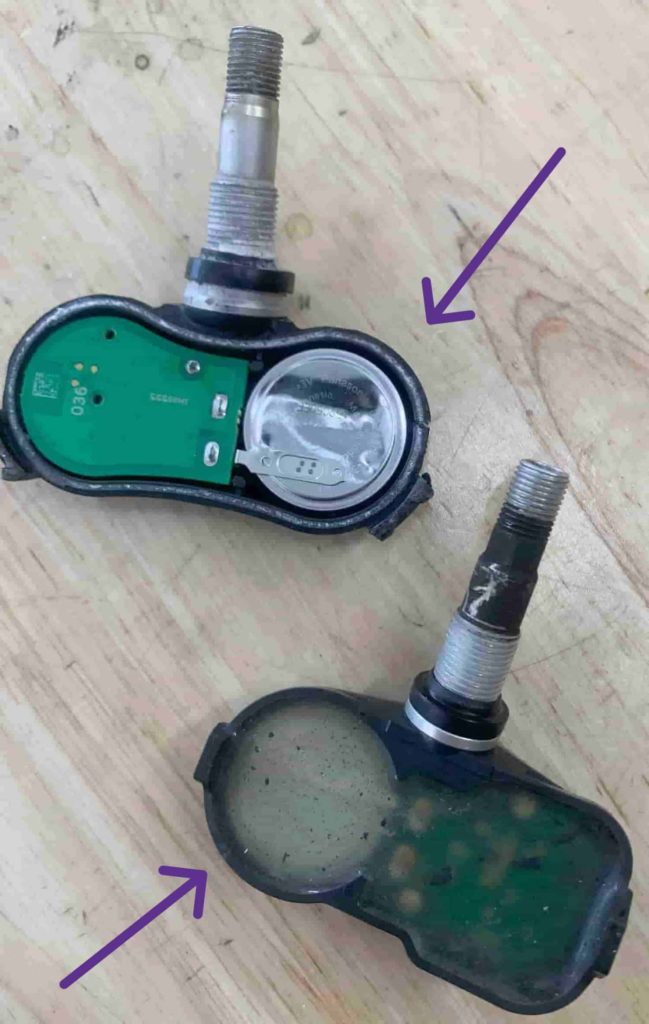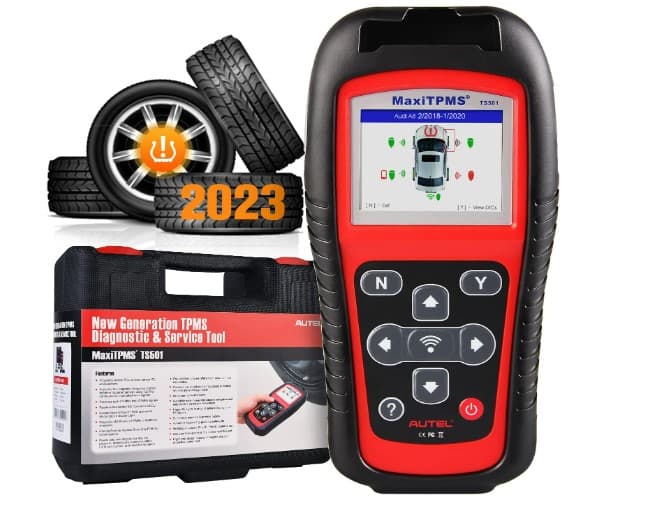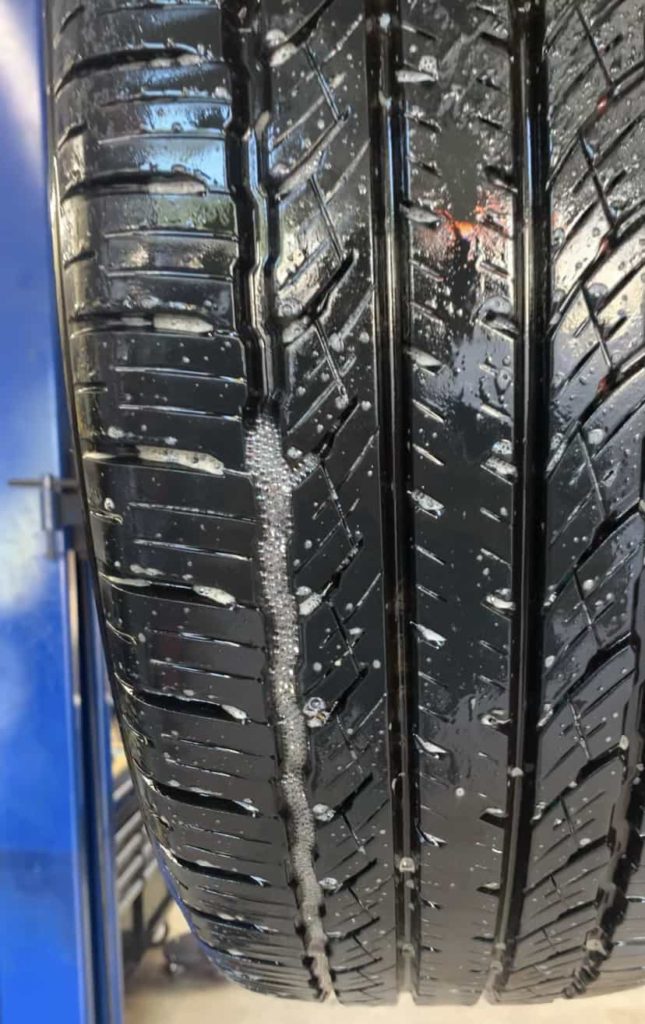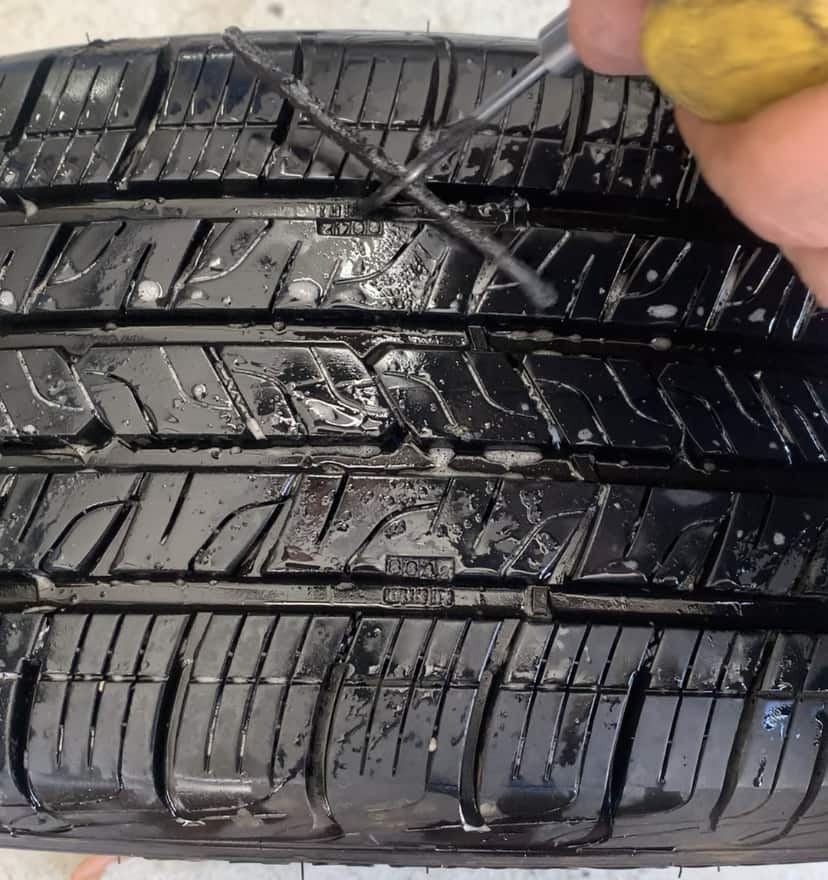How Does the Toyota Prius Tire Pressure Monitoring System Work?
The Tire Pressure Monitoring System (TPMS) in a Toyota Prius is a sophisticated system that helps drivers maintain optimal tire pressure by continuously monitoring the pressure levels and alerting the driver when the tire pressure falls below a set threshold. Here’s how the system works:
Sensors: Each tire including the spare in some models, is equipped with a sensor known as a tire pressure sensor. This sensor is integrated onto the end of the tire’s valve stem or it can be banded to the wheel. The TPMS sensor measures the pressure and temperature inside the tires.
Data Transmission: These sensors communicate wirelessly, transmitting data to the TPMS receiver module and the vehicle’s Engine Control Unit (ECU). This transmission usually occurs at regular intervals or when a significant change in pressure is detected. The radio frequency used for data transmission is either 315 Mhz or 433 Mhz.
Data Analysis: The Prius ECU analyzes the data received from each TPMS sensor. It considers various factors including the tire temperature and the pressure readings from each sensor.
Alerting the Driver: If the ECU detects that the pressure in any of the tires is below (or sometimes above) the recommended level it will trigger a warning light on the dashboard – a yellow exclamation mark inside a tire outline. This warns the driver of an underinflated tire. The specific tire with low pressure is indicated in real time on the driver information display.
Action Required: Once the alert is triggered it’s up to the driver to address the situation. This typically involves checking the tire pressure with a tire pressure gauge and inflating the tires to Toyota’s recommended cold tire pressure.
System Reset: After the tire pressure issue has been addressed, the TPMS needs to be reset. Once reset, the Toyota Prius system will again monitor the tires for any pressure deviations. (Reset procedure is below)
Toyota Prius Low Tire Pressure Light Reset Procedure
2016-2023 Toyota Prius
Park the vehicle in a safe place and stop the engine for 20 minutes or more. The initialization procedure cannot be started while the Prius is moving.
Adjust the tire inflation pressure to the specified cold tire inflation pressure level. The tire pressure warning system will operate based on this pressure level.
Turn the power switch to ON mode.
Select the multi-information display using the meter control switches on the steering wheel. (the arrows on the steering wheel)
Scroll all the way to the right and select the Gear Icon on the multi information display.
Scroll down and select Vehicle Settings.
Scroll down and select Maintenance System.
Select TPMS
Hold down the OK (circle button) on the steering wheel
For Toyota Prius with a tire inflation pressure display function: “– –” will be displayed on the multi-information display for the current inflation pressure of each tire while initialization is being performed.
Drive at approximately 25 mph (40 km/h) or more for about 10 to 30 minutes.
When initialization is complete the inflation pressure of each tire will be displayed on the multi-information display.
Even if the vehicle is not driven at approximately 25 mph (40 km/h) or more, initialization can be completed by driving for a long time. However, if initialization does not complete after driving for 1 hour or more, park the vehicle in a safe place for approximately 20 minutes and then drive the vehicle again.
If the tire light does not reset after completing these steps, re-check your tire pressures and follow the reset procedure again.
2008-2015 Toyota Prius
Park the Toyota Prius in a safe level place and stop the engine for 20 minutes or more. Note that the initialization procedure cannot be started while the vehicle is moving.
Adjust the tire pressure to the cold recommended levels.
Reach under the steering wheel and locate the TPMS reset button.
Hold the TPMS reset button and the TPMS light on the dashboard will flash 3 times.
After the TPMS light has stopped flashing, release the TPMS button.
Drive the Prius for approximately 15 minutes at speeds over 25 Mph to complete initialization.
When Should the Toyota Prius TPMS Be Reset?
After Tire Rotations.
If the load weight of the vehicle has changed.
After adjusting tire pressure.
Any time a wheel or tire is removed and then put back on the Prius.
After Replacing a Tire Sensor or Tire valve.
After any tire service such as balances or alignments.
What Can Cause the Low Tire Pressure Light to Turn On?
TPMS Sensor Problems: Faulty sensors or low batteries in the Toyota Prius TPMS can result in system malfunctions and incorrect pressure readings on the display.
Causes of Pressure Decrease: Factors like changing temperatures, leaking valve stems, bead seal leaks, tire punctures, cracked wheels, changes in elevation, natural air loss, and worn-out tires can all contribute to reduced tire pressure.
Risks During Tire Installation: Carelessness during the mounting of a tire can easily lead to a damaged TPMS sensor.
Incorrect Tire Pressure: Either over-inflating or under-inflating the tires will activate the tire pressure warning light.
Radio Frequency Interference: Nearby devices operating on similar radio frequencies (either 433 Mhz or 315 Mhz) to the TPMS sensors can lead to inaccurate readings or system malfunctions.
Damage to TPMS Receiver: Issues with the wiring or connectors linked to the TPMS receiver module can cause errors in the tire pressure system.
Absence of Sensors in Wheels: Utilizing wheels that lack tire pressure sensors, such as a distinct set of winter or summer tires, will result in a TPMS system error.
Toyota Prius Tire Pressure
Will the Weather Affect the Toyota Prius Tires?
Weather conditions can significantly influence the tire pressure in a hybrid Toyota Prius. As the ambient temperature drops the air inside the tires condenses causing decreased tire pressure. For every 10-degree Fahrenheit drop in temperature, tire pressure can decrease by about 1 PSI (Pounds per Square Inch). This is why it’s common for the tire pressure light to turn on when it is cold outside. Conversely, as temperatures rise the air inside the tires expands which will increase the tire pressure. These fluctuations can affect the Prius’s fuel efficiency, tire wear, and overall driving safety. The TPMS (Tire Pressure Monitoring System) plays an essential role in managing these weather-induced changes by alerting drivers to adjust tire pressure accordingly.
2023 Toyota Prius Wheel Size and Tire Pressure
TIRE SIZE | FRONT PSI | REAR PSI |
195/65R15 | 36 | 36 |
215/45R17 | 33 | 32 |
SPARE | 60 | 60 |
How to Check & Adjust Tire Pressure
Prepare Your Tools: We recommend digital tire pressure gauges because they are accurate and give easy to read readings.
Wait for Tires to Cool: Tire pressure should be checked when the tires are ‘cold’ or haven’t been driven on for at least a few hours. This is because driving warms up the tires, causing the air inside them to expand and thus providing a higher-than-actual pressure reading.
Find the Recommended Tire Pressure: Look for the white and yellow sticker on the driver’s side door jamb. This sticker will list the recommended tire pressure for your vehicle measured in PSI (Pounds per Square Inch).
Remove the Valve Cap: Unscrew the valve caps and keep them in a safe place.
Measure the Pressure: Place the tire pressure gauge onto the valve stem and press down hard enough so that the hiss sound disappears. Your gauge will then provide a reading.
Compare the Pressure: Compare the PSI reading from your gauge to the PSI on your Prius’s tire pressure sticker.
Adjust the Pressure: If the reading is lower than recommended, add air to the tire using an air compressor until it reaches the recommended PSI. If the pressure is too high, release some air and measure again. ( Gently push the metal pin in to release air)
Replace the Valve Cap: Once the tire pressure is adjusted, don’t forget to screw the valve cap back onto the stem to prevent any dirt or debris from entering.
Check All Tires: Repeat the process for all four tires. Don’t forget to check your spare tire as well if you have one.
dfg
What are the Impacts of Driving With Low Tire Pressure?
Driving with underinflated tires in a Toyota Prius Hybrid can lead to several detrimental impacts affecting both the vehicle’s performance and your safety on the road:
Reduced Fuel Efficiency: Under Inflated tires increase the vehicle’s rolling resistance, meaning your car has to work harder to move. This results in higher fuel consumption undermining the hybrid technology of the Prius designed for optimal fuel efficiency.
Increased Tire Tread Wear: Underinflated tires can cause uneven and accelerated tire wear because more of the tire’s surface area comes into contact with the road. This can lead to premature tire replacement, adding to maintenance costs.
Impaired Handling and Braking: The handling characteristics and braking distances can be negatively affected by underinflated tires. They can make the Prius harder to steer and increase the stopping distance.
Overheating: Underinflated tires will generate excessive heat due to increased friction with the road. This can potentially lead to tire failure.
Toyota Prius Tire Pressure Sensor Batteries
Every tire pressure sensor runs on its own integrated battery. They look like basic silver-oxide wrist watch batteries. It’s important to note that you can’t replace these batteries because they’re connected to the sensor’s circuit board. When the battery dies or is low on power you need to replace the entire sensor. The battery’s lifespan can fluctuate due to factors such as driving conditions and weather variations. Typically these sensor batteries last anywhere from 5 to 10 years.
Diagnosing Problems with the Toyota Prius Tire Pressure Light
While it may be frustrating, the tire pressure light illuminates for a specific reason. If we assume the tire pressure is set correctly in all four tires, the issue usually boils down to one of a few factors:
A pressure sensor battery is low or dead
One or more tires are leaking air
The Toyota Prius TPMS Receiver module or ECU are not communicating with one or more tire pressure sensors.
Here are 5 potential solutions to help resolve the tire pressure light issue:
Solution 1: Is a Tire Leaking Air?
The primary cause for the activation of the tire pressure light is often a slow leak in a tire. If you inflate a tire low on air, get the tire light to turn off after resetting it, only for the light to come back on—be it in minutes, hours, or days—it’s a strong indicator that the tire or wheel has a leak.
Solution 2: Clear the Toyota Prius Diagnostic Trouble Codes (DTC's)
You can manually reset the low tire pressure warning on the Toyota Prius by erasing the temporary diagnostic trouble code stored in the car’s computer. To do this, disconnect the main 12-volt battery because it will interrupt power to the Engine Control Unit (ECU). Be sure to leave the hybrid battery alone! Before you disconnect the battery, ensure the ignition is turned off and always start by removing the negative terminal first. This action will clear all temporary Diagnostic Trouble Codes (DTCs) including the one triggering the low tire pressure light. Once you reattach the negative terminal, the Toyota Prius begins its “relearning” phase. Drive the Prius for 30 minutes at a constant speed of 50 Mph. If the low tire pressure alert deactivates and then reactivates either during or after driving, this could signify either a malfunctioning sensor that needs replacement or a tire that is gradually losing air due to a leak.
Solution 3: Testing Each Tire Pressure Sensors Battery Status
If you’re confident that your tires are not leaking and you wish to identify the specific tire sensor responsible for activating the tire light, you can evaluate each sensor using a TPMS diagnostic tool. This approach is generally the same regardless of the diagnostic tool’s make, model, or brand. To test each sensor, place the diagnostic device near the valve stem and select the “test” or “trigger” option. After evaluating each of the sensors, the device will produce a battery health report for each one. If any sensor shows a “low” reading, fails to update, or doesn’t register during the test, it’s a sign that that particular TPMS sensor needs to be replaced.
Solution 4: Why Does the Tire Light Turn On and Off On Its Own?
When you turn on the Toyota Prius and notice that the tire pressure light comes on but then extinguishes as you start driving, it generally implies that the tire pressure could be slightly below the recommended level for cold tires. This situation commonly occurs with tires that are cold or haven’t been driven recently; as the tires heat up the pressure naturally increases which turns off the warning light. To resolve this, ensure that the front and rear tires are at the exact recommended pressures when the tires are cold.
Solution 5: Overfill the Prius Tires to Reestablish TPMS Communication
If you have tried the first four solutions and the tire light still won’t turn off, you can attempt to force the tire pressure sensor and TPMS receiver module to start communicating. Start by deflating the problem tire by 10-15 Psi or more and then inflate that tire by 5 Psi over the recommended pressure. (If the front tire is supposed to be 33 Psi, deflate it to 15 Psi then fill it to 38 Psi) With the tire over inflated take the Toyota Prius for a few mile drive at speeds over 20 Mph. After a few miles of driving, park the Prius and set the pressures back to the recommended values. Drive the car again.
Solution 6: Find the Leaking Tire
To find a tire leak in your Toyota Prius, start by checking the air pressure in all four tires to identify the one that’s low. Inflate the tire that’s low on to 35 Psi. Next, create a mixture of soap and water in a spray bottle (or you can use windex or something similar) and thoroughly spray it all over the tire. Be sure to cover the valve stem and bead seal as well. Get the entire tire completely covered in soapy water. After waiting for a bit, closely inspect the tire for any tiny bubbles. If there’s a leak, the escaping air will form small bubbles at the leak site where you’ve sprayed the soapy solution. Keep in Mind: If the tire is losing air, there is a leak.
Common Toyota Prius TPMS Questions
Are Tire Plugs Reliable?
Certainly! Having utilized tire plugs numerous times during my tenure at tire shops, I can personally attest to their reliability. They’re superb for fixing holes and punctures in tires, creating a seal that prevents air from leaking out. Tire plugs are constructed from strong rubber like materials capable of enduring changes in air pressure and temperature within the tire. If correctly installed a tire plug can last as long as the tire itself. However, it’s essential to mention that tire plugs should not be used for repairing the sidewall of the tire.
Why is the Toyota Prius Tire Light Flashing?
The Toyota Prius has a TPMS malfunction indicator as well as the standard low tire pressure light. They both use the yellow exclamation mark to warn the driver of a tire issue but when the exclamation mark is flashing, the tire pressure monitoring system is not functioning correctly. When the tire light is flashing, one or more tire pressure sensors have lost communication with the Prius TPMS receiver module. The tire light will flash for about a minute and then stay lit everytime the car is started until the issue is resolved. A TPMS malfunction is indicative of an issue within the tire pressure system, not an air pressure issue.
Is it Safe to Drive the Toyota Prius With the Tire Light On?
When the Toyota Prius low tire pressure light turns on, pull over and check the tire pressure as soon as possible. As we have explained throughout this article, there are many possible causes for why the tire pressure light is on. Understanding what’s wrong will help you decide if it’s safe to drive and for how long.
Are Tire Sealants Safe to Use?
Tire sealants should only be used in emergency situations. They can potentially damage your tire pressure sensors and the tire itself, leading to costly repairs! If you find yourself in a situation where you’ve had to use a tire sealant, ensure you take your Toyota Prius to a tire shop as soon as possible and have them clean out the tire sealant and test the tire pressure sensor.
Will the Toyota Prius Pass State Inspection with the Tire Light On?
Indeed, your Toyota Prius can still pass the state inspection even with the tire pressure light on. As a certified state inspector in New Jersey for the past 5 years I can assure you that an operational TPMS isn’t a requirement for passenger vehicles to pass inspection in NJ, even with an active tire pressure light. Although most states will inspect the TPMS, they usually won’t fail the vehicle solely for having the tire pressure light on.
Everything in this article is applicable to all Toyota Prius models and trims including the Toyota Prius Prime, Prius LE, Prius XLE, Prius Limited.
Please note that this blog post contains Amazon affiliate links. This means that if you make a purchase through one of these links, we at TPMSRESET.com may earn a small commission at no extra cost to you. We only recommend products that we personally use and believe in. Thank you for supporting us.

